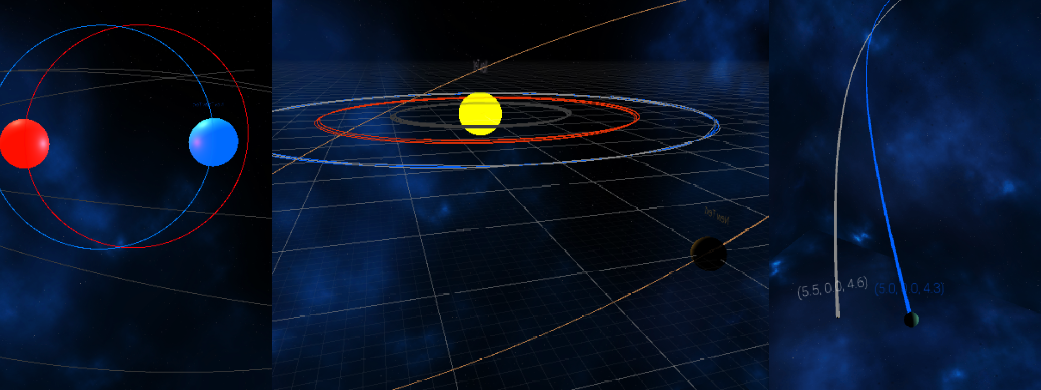Solar System Simulation

As a final project for the models and simulations course at KTH the students were tasked with creating a computer simulation related to mathematical and numerical simulations.
The project was to be done in groups of two to three students and so I collaborated with another student for the project. Our goal with the project was, as given away by the title, to simulate a solar system simulation
through the universal law of gravitational attraction. Working on this project was very interesting, as it for me was a brand new way of using Unity to create a simulation of a real world scenario, which was quite different
from anything I had worked on in Unity previously. As the centerpiece of the project is the single “orbital body” script which we wrote for the project. The script component included the mass and starting speed for each planet,
as well as methods for continuously calculating and applying the gravitational force pull to all other orbital bodies in the scene. A highlight of the project was when we, before running the simulations, sat down and calculated
the exact starting speed required to achieve circular orbits for each planet and applied the accurate starting velocities to each planet, after which we ran the simulation and observed the orbits form near perfect circular orbits.
To improve on the project, we also added simple worldspace text boxes so that you could continuously see the movement speed of each planet change in the XYZ axes as they made their way through the solar system. As a final touch for
the project, we modified a script written by youtuber Sebastian Lague, and managed to pre-rendered the orbital trajectories of each planet. The project was overall very successful and was given the grade A.
If you want to read more about our project, feel free to check out our full project report.